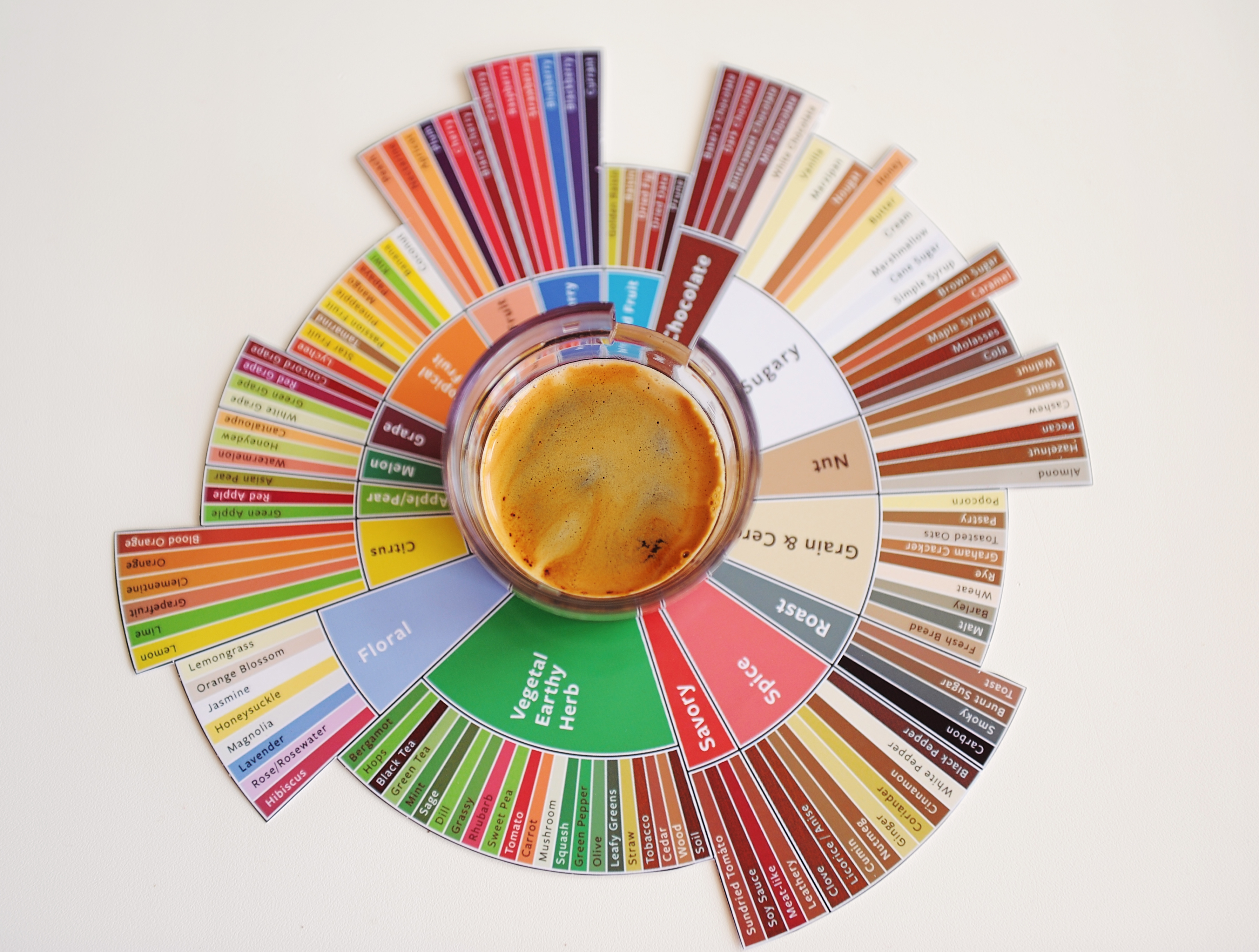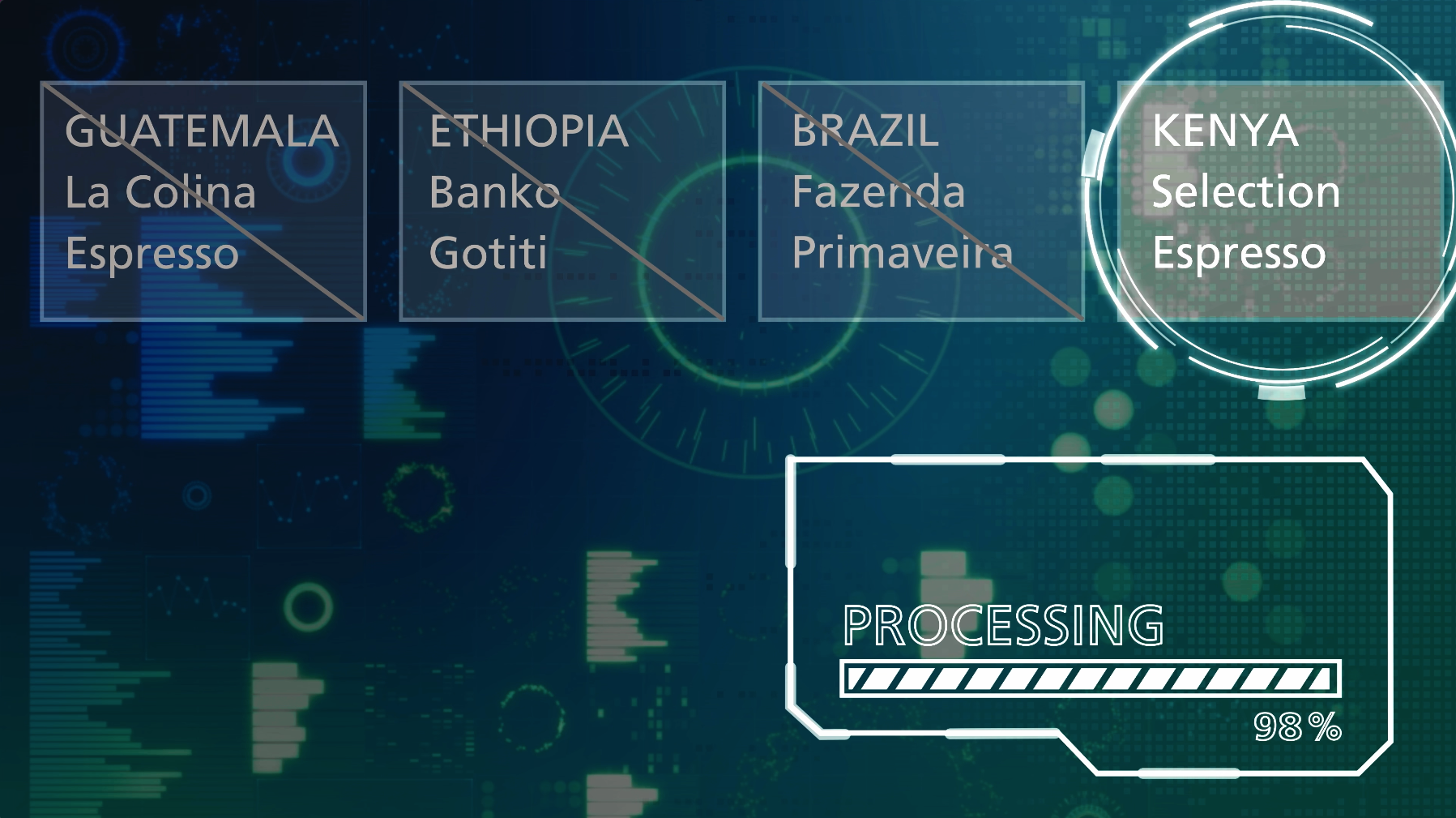Apple, lemongrass, black pepper, or even popcorn are just a few of the aromas that can be used to describe a coffee. The Digital Sensory Perception working group at Fraunhofer IIS is exploring how technology can be used to distinguish between products, such as coffee, based on gases and odors. Learn more about the world of coffee aromas and what artificial intelligence (AI) has to do with deciphering them in this interview with experts from Fraunhofer IIS and the Kaffeesurium roasting house in Fürth.
AI-based gas analysis deciphers coffee aromas
May 22, 2023 | In an interview, experts explain how the smell of coffee can be measured
Every coffee has its own flavor profile, which is made up of a hugely multifaceted spectrum of tastes such as sweet, sour, or bitter and smells perceived via the nose, such as berry, nut, or even vegetable aromas. While the type of coffee has a decisive influence on the aroma profile, the flavor experience is also affected by factors such as processing, transport, and roasting. Luzia and Berni Taschler from the Kaffeesurium roasting house in Fürth explain:
»For example, we can’t take a chocolatey, nutty coffee and bring out a strawberry flavor from it during roasting – but we wouldn’t want to anyway. In the roasting process, we’re more concerned with coaxing out and balancing the inherent characteristics of the coffee.«
– Berni Taschler from the Kaffeesurium café and roasting house


The sheer complexity of coffee aromas is illustrated by the broad spectrum of notes, the myriad ways of influencing the flavor profile, and the subtle interplay between the sensory organs. This complexity is compounded by a problem that seems almost trivial in comparison – namely, the challenges of communicating about aromas internationally: »For example, let’s say we want a fruity coffee and that we’d like it to have a blackcurrant note. The grower country we’re communicating with may have a different understanding of what a blackcurrant tastes like. In the worst-case scenario, the fruit might not even exist there. Conversely, we may or may not be familiar with fruit varieties that they use in the description. Technical analysis could bring greater clarity and standardization to the international coffee trade.« Although there are currently no precise means of analyzing coffee aromas, the Digital Sensory Perception working group at Fraunhofer IIS has succeeded in developing a coffee classifier that can distinguish between coffees of different types – and from different producers – based on their gas profile.
Robusta or arabica? The coffee classifier knows!
The coffee classifier uses an AI-based system for gas analysis, which relies on a gas sensor. From the various sensor types available, the researchers chose a metal oxide (MOX) sensor for testing purposes in this case. Teresa Scholz, senior scientist in the Digital Sensory Perception working group, explains: »We first have to collect data about the gases from various coffee types and then use the algorithm to say, ‘That’s precisely this brand, this variety,’ and so on.« If this classification is to be carried out automatically in the future, with the lowest possible error probability, it will require large quantities of data rather than just a few examples. This also illustrates why it would be difficult to develop an accurate gas analysis system for each individual facet of an aroma. Given that large quantities of data are already needed just for the four selected producers and types, one can easily imagine the huge quantities of data needed to reliably analyze the full spectrum of aromas.
»The question is always: Can gas sensor technology provide results of sufficient quality for the intended application, and does gas analysis pay off compared with conventional methods when it comes to price?«
– group manager Sebastian Hettenkofer
From quality control of coffee to smoke alarms – applications of gas sensor technology
One realistic use case of AI-based gas analysis is in quality control – for example, to determine whether a shipment actually contains the type of coffee ordered. There are also numerous applications beyond the world of coffee. In the PINOT project, gas analysis is used to help winegrowers and cellar masters with the quality assurance of wine aroma, taste, and texture. The technology could potentially also be used in special smoke alarms. It’s clear that the applications of AI-based gas analysis are as varied as the world of coffee aromas itself.
The experts
Sebastian Hettenkofer, group manager of the Digital Sensory Perception group
»My favorite coffee is a mixture of arabica and robusta from a roasting house here in Erlangen and Nuremberg – it’s very chocolatey and has low acidity. That’s very important to me. I don’t drink much coffee, though: one large cappuccino and I’m set for the whole day.«


Teresa Scholz, senior scientist in the Digital Sensory Perception group
»I’ve only been back in Germany for a year. In Portugal, where I lived beforehand, there’s a little café on every street corner where you can get a delicious espresso for 60 cents. That’s something I really miss here, so I’m currently importing Portuguese coffee to try and emulate it. Unfortunately, it doesn’t taste quite as I remember when I make it with my little Bialetti on an electric stove.«
Luzia and Berni Taschler, owners of the Kaffeesurium café and roasting house in Fürth
»Overall, our coffee-drinking habits are quite different. Berni drinks coffee everywhere he goes, but I’m a bit choosier and avoid coffee if I don’t like the way it smells. Our preferences also differ when it comes to questions like ‘espresso – yes or no?’ or ‘do you take your coffee with or without milk?’. The common denominator for both of us is a classic filter coffee. With two kids at home, you need a good cup of coffee in the morning to kick-start the day!«

